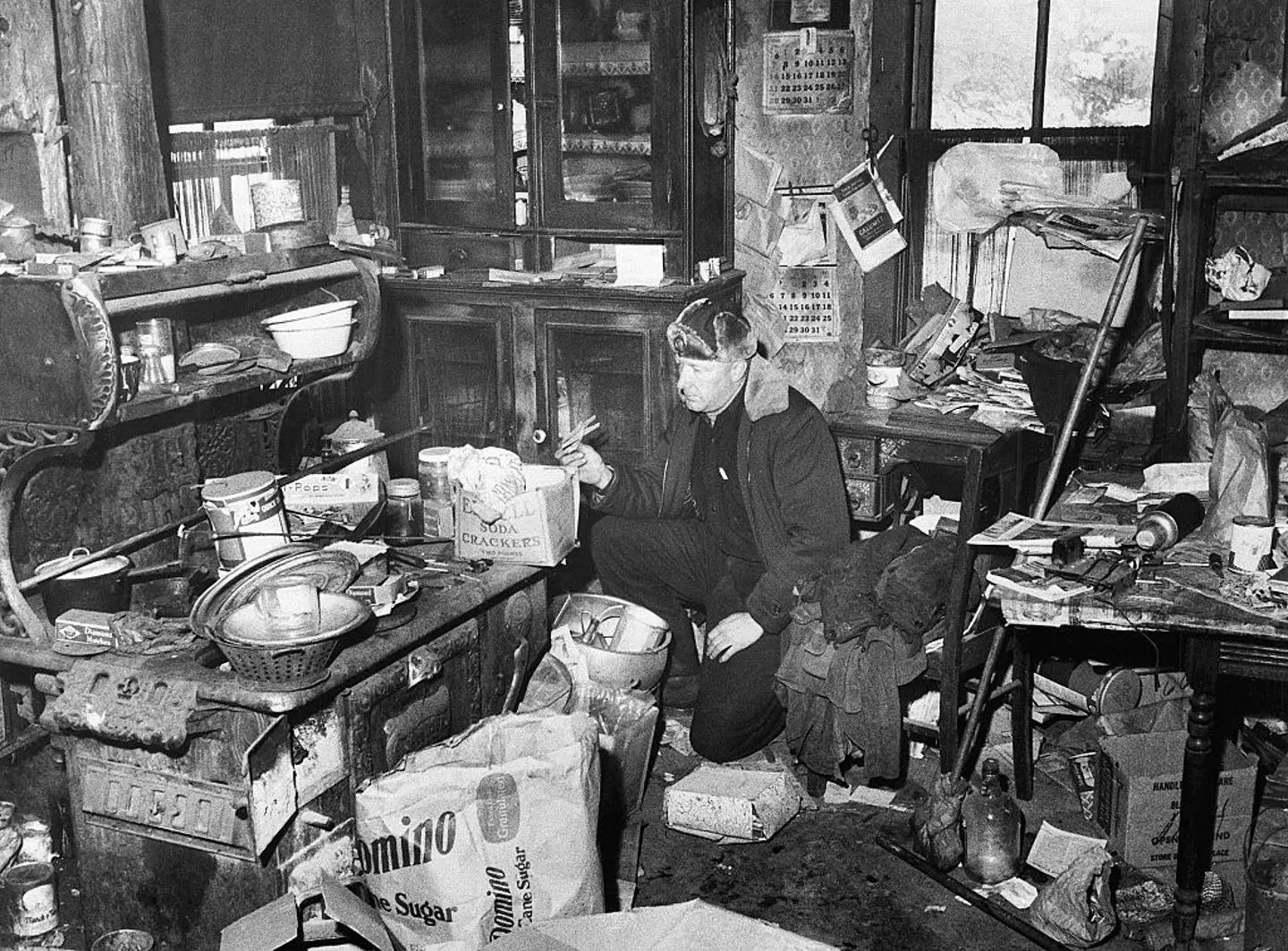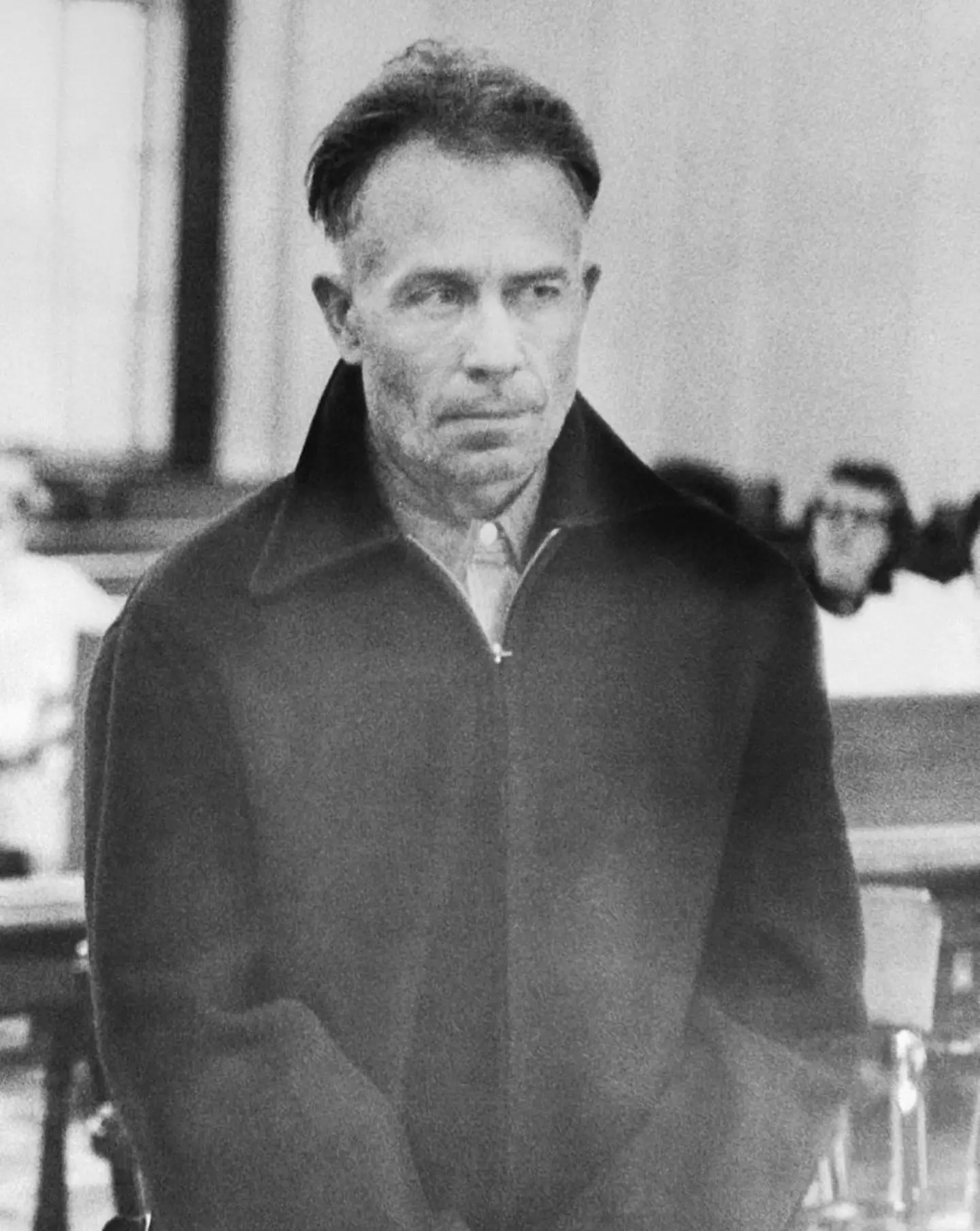Recently, Ed Gein has become the focal point of interest as Netflix’s Monster series delves into his notorious crimes, including his unsettling creations made from human remains.
Gein was convicted for the murders of two women during the 1950s. Although this doesn’t classify him as a serial killer by strict definitions, he is suspected of having killed seven additional individuals near his hometown of Plainfield, a small village located in central Wisconsin.
The murders of Bernice Worden and Mary Hogan were gruesome, but what he did with their bodies afterwards was even more disturbing—transforming them into furniture pieces for his macabre collection. These items were eventually destroyed in a fire that occurred a few months after his capture.
Known as the Butcher of Plainfield, Gein was arrested in 1957 following the unexplained disappearance of Bernice Worden, a local hardware store employee. Authorities traced the incident back to Gein after discovering his name as the last entry on a receipt she had written the day she vanished.
Upon apprehending Gein, officers found Worden’s decapitated body within a shed on his property, hung up with a crossbar around her ankles and rope around her wrists. The 58-year-old had been shot fatally prior to being dismembered.
After the death of Gein’s abusive father in 1940, he and his brother Henry, who were isolated due to their mother’s strict religious views, began taking on odd jobs around town. At the time of their father’s death, Gein was 33 and had developed some skills in upholstering, learned from his mother.
However, following his mother’s passing in 1945, Gein began exhuming bodies from cemeteries and converting human remains into furniture, clothing, and even some household items.
Detailing all of his heinous acts would be exhaustive, as a vast array of horrifying objects and human remains were found across his expansive 195-acre property.

Upon entry to Gein’s residence, law enforcement officials were appalled to find that he had stitched human skin together to create a wastebasket.
They uncovered numerous chairs covered with human skin, a lampshade fashioned from a human face, a window shade drawstring with attached lips, and human skulls mounted on his bedposts.

Gein, who passed away at the age of 77 at the Mendota Mental Health Institute in Madison in 1984, also turned human remains into clothing and accessories.
He crafted masks from the skin of some of his female victims, including a face mask from Mary Hogan’s corpse, to whose murder he confessed shortly after his capture.
Authorities also discovered a belt made of female nipples, leggings created from the skin of real legs, and a corset made from a woman’s torso — the body flayed from shoulders to waist.

Gein’s brother Henry’s remains were also found on the property, although he was discovered more than a decade prior to Gein’s arrest, and no autopsy was conducted.
In addition to Worden’s decapitated body, skulls altered as bowls were found, alongside Hogan’s skull in a box, Worden’s heart inside a plastic bag in front of the stove, and her head in a sack.
Additionally, the property contained four noses, female fingernails, nine vulvas in a shoebox, and female skulls with the tops sawed off.

